The Army Combat Fitness Test (ACFT) is an essential part of the U.S. Army’s fitness program, designed to assess a soldier’s physical strength, endurance, and agility. However, understanding that not all soldiers can perform the standard events due to certain limitations, the Army has incorporated alternate events, providing an inclusive fitness assessment framework.
These alternate events – the Plank, Rowing, Biking, and Swimming – offer low-impact alternatives that still gauge key physical competencies. This article will delve into these ACFT alternate events, exploring their specific standards, and how they contribute to ensuring the comprehensive readiness of all soldiers.
What Are 3 Major Events To the ACFT:
Deadlift
[tds_note]The Deadlift is the first event of the ACFT and is a true test of lower-body strength and muscular endurance. Soldiers are required to lift a weight ranging from 140 to 340 pounds, depending on their age, gender, and category. The objective is to perform three repetitions of the lift with proper form and without injury [1]. This event is critical because it mirrors real-world activities soldiers might encounter in combat situations, such as lifting and carrying heavy equipment or a fellow soldier. It tests the posterior chain muscles, including the glutes, hamstrings, lower back, and core, all of which are essential for operational tasks.[/tds_note]
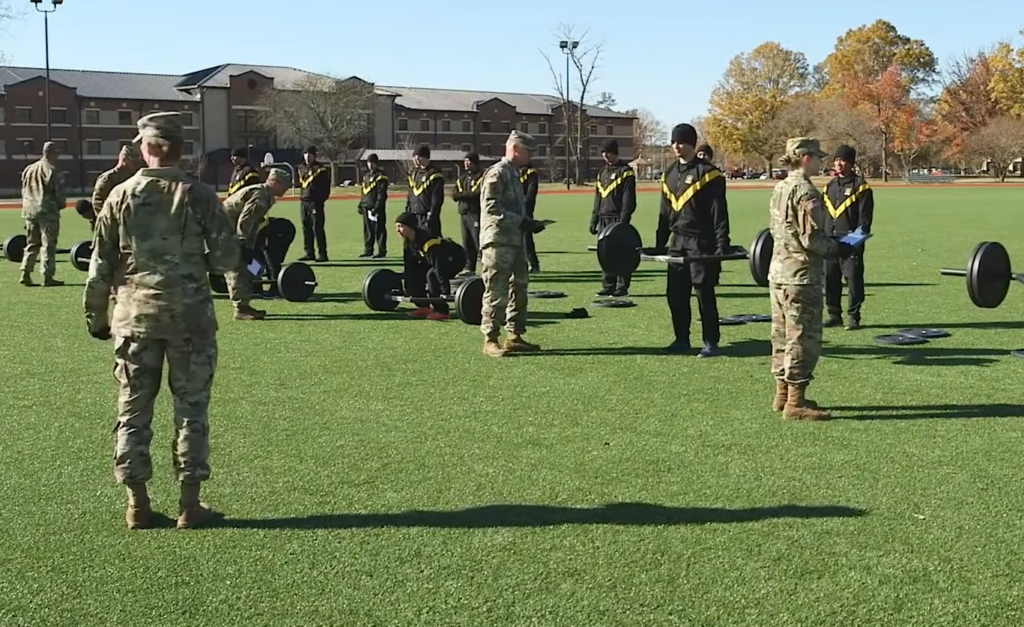
Strength training, particularly exercises that target the muscles involved in the deadlift, is crucial for improving performance in this event. Proper technique is also paramount to prevent injuries and maximize the amount of weight lifted. Soldiers are advised to engage in a well-rounded strength training program that includes variations of the deadlift, such as the traditional barbell deadlift, sumo deadlift, and Romanian deadlift, to build strength and improve form.
Sprint-Drag-Carry
The Sprint-Drag-Carry is arguably one of the most physically demanding events of the ACFT. It consists of five different components performed back-to-back: a 50-meter sprint, a 50-meter drag of a 90-pound sled, a 50-meter lateral shuffle, a 50-meter carry of two 40-pound kettlebells, and a final 50-meter sprint [2]. This event tests a soldier’s speed, agility, and muscular endurance, simulating the variety of movements that might be required on the battlefield.
Training for the Sprint-Drag-Carry requires a multifaceted approach. Interval training, agility drills, and strength endurance exercises are key components of an effective training regimen. Incorporating exercises like sled drags, kettlebell carries, and lateral shuffles into workouts can help soldiers prepare for the diverse challenges of this event. Additionally, focusing on cardiovascular fitness through sprint interval training can improve overall performance and recovery between the segments of the Sprint-Drag-Carry.
2-Mile Run
The 2-Mile Run, a holdover from the APFT, tests cardiovascular endurance and stamina. Soldiers are required to complete the run in the shortest time possible, with scoring based on age and gender. This event is a direct measure of a soldier’s aerobic fitness, which is essential for sustained operations and overall combat effectiveness.
Preparation for the 2-mile run involves a combination of long-distance running, speed work, and interval training. Building a solid aerobic base through consistent long runs is crucial, as is incorporating intervals and tempo runs to improve pace and endurance. Additionally, cross-training activities like cycling or swimming can help prevent injuries by reducing the impact on joints while still improving cardiovascular fitness.
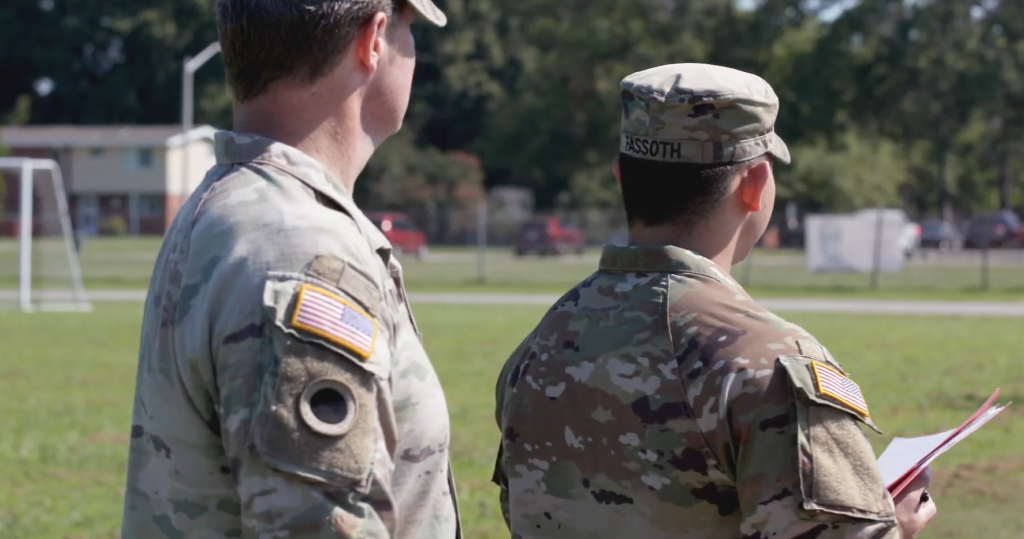
Does ACFT Allow Alternate Events?
The Army Combat Fitness Test (ACFT) includes provisions for alternate events under specific circumstances. The ACFT was designed to better assess a soldier’s combat readiness through a series of six challenging events. However, understanding that not all soldiers may be able to perform these standard events due to temporary or permanent physical limitations, the Army has outlined alternate events for those who require them.
The alternate events are primarily intended for soldiers with profiles that prevent them from safely performing one or more of the standard ACFT events. Profiles are medical documents issued by healthcare providers that outline the specific physical activities a soldier can or cannot do. For a soldier to be eligible to take an alternate event, their profile must specifically restrict them from participating in one of the standard ACFT events.
The alternate aerobic events include the 15,000-meter (12,000-mile) stationary bike, the 1,000-meter swim, and the 5,000-meter row [3]. These events are designed to assess cardiovascular endurance without the impact or specific physical movements that might be restricted for some soldiers. It’s important to note that the availability of alternate events and the specific requirements may be subject to change as the Army continues to evaluate and update the ACFT to ensure it meets the needs of all soldiers while accurately measuring combat readiness.
The introduction of alternate events is part of the Army’s effort to make the ACFT as inclusive and adaptable as possible, recognizing that soldiers have different capabilities and may face temporary or permanent physical challenges. The goal is to ensure that all soldiers have the opportunity to demonstrate their fitness and readiness for combat, even if they are unable to participate in the standard events. Soldiers are encouraged to work closely with their medical providers and chain of command to determine their eligibility for alternate events and to receive guidance on how to properly prepare for and execute these alternatives within the parameters of their profiles.
Benefits of ACFT Alternate Events
The inclusion of alternate events in the Army Combat Fitness Test (ACFT) offers several benefits, reflecting the U.S. Army’s commitment to inclusivity, adaptability, and comprehensive assessment of a soldier’s physical fitness. These benefits are crucial for maintaining a ready and resilient force, capable of meeting the diverse demands of military operations.
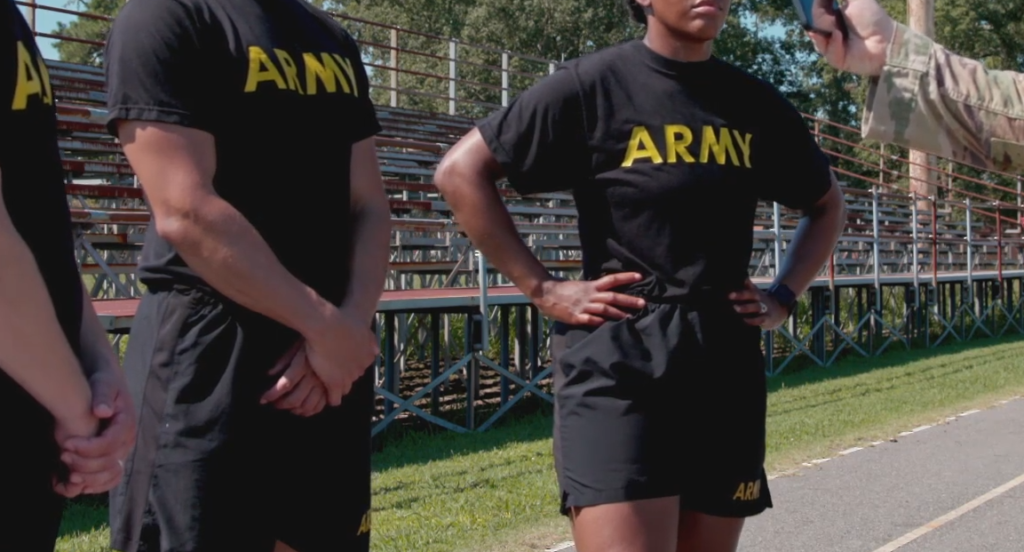
Here are some of the key advantages:
1. Inclusivity and Accessibility
- Accommodates Diverse Physical Abilities: Alternate events ensure that soldiers with temporary or permanent physical limitations can still participate in fitness testing. This approach recognizes the value of all soldiers by providing avenues for them to demonstrate their fitness levels and continue serving effectively;
- Promotes Rehabilitation and Recovery: Soldiers recovering from injuries can use alternate events as part of their rehabilitation process. These events allow them to maintain their physical fitness without exacerbating injuries, facilitating a smoother transition back to full duty;
2. Comprehensive Fitness Assessment
- Assesses Different Components of Physical Fitness: The alternate events are designed to test cardiovascular endurance and muscular strength, similar to the standard ACFT events. This ensures a holistic assessment of a soldier’s physical fitness, even if they are unable to perform certain standard events;
- Ensures Readiness: By allowing soldiers to complete alternate events, the Army ensures that all personnel are tested for physical fitness, which is a critical component of military readiness. This approach helps maintain a high level of preparedness across the force;
3. Adaptability and Flexibility
- Reflects Operational Realities: The battlefield demands adaptability, and soldiers often have to overcome physical and environmental challenges. The alternate events mirror this reality by providing options that accommodate different physical conditions while still ensuring that soldiers meet fitness standards;
- Supports a Culture of Fitness: By including alternate events, the Army reinforces the importance of physical fitness as a foundational aspect of military service. It encourages soldiers to engage in regular physical training tailored to their abilities and recovery needs [4];
4. Motivation and Morale
- Encourages Continued Participation: Soldiers with profiles might feel excluded from the camaraderie and competitive spirit associated with physical fitness tests. Alternate events allow them to remain actively involved, boosting morale and fostering a sense of belonging;
- Promotes Goal Setting: Having the option to participate in alternate events allows soldiers to set realistic fitness goals aligned with their recovery or physical capabilities. This can be highly motivating and contribute to overall well-being and job satisfaction;
5. Tailored Training and Development:
- Facilitates Personalized Training Programs: The availability of alternate events encourages soldiers and their trainers to develop personalized training programs. These programs can address specific fitness goals and limitations, leading to better overall fitness outcomes;
- Enhances Rehabilitation Programs: For injured soldiers, alternate events can be integrated into rehabilitation programs, offering measurable goals that contribute to their physical recovery and readiness to return to full duty;
Types of Alternate Events
The Army Combat Fitness Test (ACFT) is a six-event physical fitness test designed to assess a soldier’s physical readiness for combat. However, not every soldier can perform all six events due to temporary or permanent physical limitations. In such cases, the Army offers alternate events that soldiers can take part in.
These events are designed to assess the same physical attributes as the standard ACFT events but are modified to accommodate different physical limitations:
2.5 Mile Walk
The 2.5-mile walk is one of the alternate events offered by the Army. This event is designed to assess a soldier’s aerobic capacity in the same way as the 2-mile run [5]. The soldier must complete the 2.5-mile distance as quickly as possible. The event is typically used for soldiers who have lower body injuries that prevent them from running.
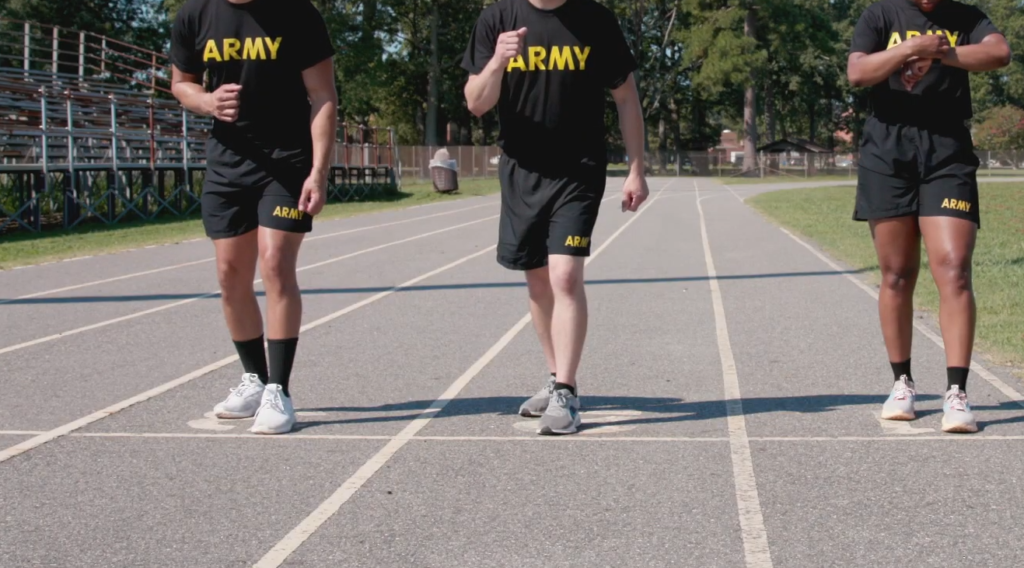
6,000 Meter Stationary Row
The 6,000-meter stationary row is another alternate event. It’s designed to test a soldier’s aerobic capacity. Soldiers must use a rowing machine to cover a distance of 6,000 meters as quickly as possible. This event is often used for soldiers who have injuries that prevent them from running but can still use their upper bodies effectively.
15,000 Meter Stationary Bike
The 15,000-meter stationary bike ride is an alternate event that tests a soldier’s aerobic capacity. The soldier must ride a stationary bike and cover a distance of 15,000 meters as quickly as possible. This event is suitable for soldiers who have lower body injuries that prevent them from running or rowing.
Upper Body Ergometer
The upper body ergometer is an alternate event designed to test a soldier’s upper body strength. This event involves using a machine that simulates the action of rowing, but with the arms and upper body only. The soldier must use the machine to cover a specified distance as quickly as possible. This event is often used for soldiers who have lower body injuries that prevent them from running or performing the standard deadlift event.
Strength Deadlift
The strength deadlift is an alternate event for the 3-repetition maximum deadlift. Instead of lifting the maximum weight three times, the soldier will lift a lighter weight for five repetitions. This event is designed for soldiers who have limitations that prevent them from lifting heavy weights but can still perform a deadlift with proper form.
Seated Power Throw
The seated power throw is an alternate event for the standing power throw. Instead of throwing a 10-pound medicine ball backward over the head from a standing position, the soldier will throw the ball from a seated position. This event is designed for soldiers who have disabilities or injuries that prevent them from standing or jumping.
Official ACFT Alternate Events:
Plank & Standards
Replacing the traditional sit-ups, the plank event tests a soldier’s core strength and endurance. This exercise demands the soldier maintain a proper plank position for a minimum duration to pass. The soldier must place their elbows directly under their shoulders with their feet hip-width apart. The body should form a straight line from the head to the feet.
The minimum standard for the plank event is holding this position for at least 2 minutes and 9 seconds [6]. To achieve a maximum score, a soldier must hold the position for 4 minutes and 20 seconds. Soldiers are required to maintain proper form throughout the exercise, and any deviation can result in disqualification.
Row & Standards
The rowing event is an excellent alternative for soldiers who cannot perform high-impact events due to injury. It tests cardiovascular endurance and upper body strength. Soldiers use a rowing machine set to a specific resistance level. The goal is to cover a certain distance within a set time.
The minimum standard for the rowing event is completing 5,000 meters within 25 minutes for men and 27 minutes for women. To achieve a maximum score, men must finish within 18 minutes and women within 20 minutes. Proper form is crucial in this event to prevent injury and ensure effectiveness.
Bike & Standards
The stationary bike event provides another low-impact alternative for soldiers. This event tests cardiovascular endurance and lower body strength. Soldiers are expected to pedal a stationary bike at a consistent speed to meet the required distance in the given time.
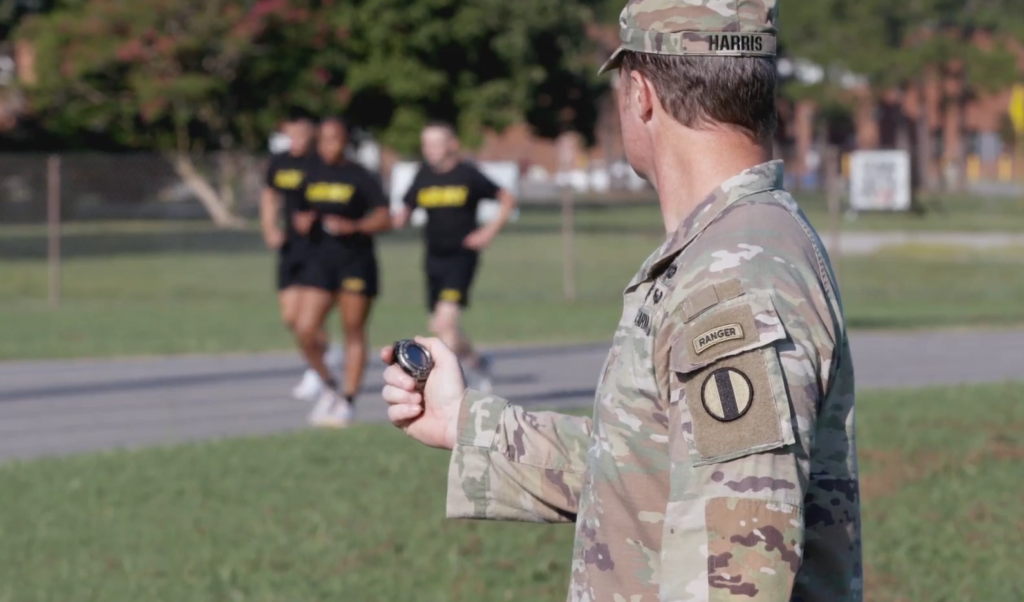
The minimum standard for the bike event is completing 12,000 meters within 25 minutes for men and 27 minutes for women [7]. For a maximum score, men must finish within 18 minutes and women within 20 minutes. Maintaining a steady pace and proper form is essential in this event.
Swim & Standards
Swimming offers a full-body workout and serves as an effective alternative for soldiers with certain limitations. The swim event tests cardiovascular endurance, upper body strength, and swimming technique. Soldiers must swim a specific distance within a given time.
The minimum standard for the swim event is covering 1,000 meters within 25 minutes for men and 27 minutes for women. For a maximum score, men must finish within 18 minutes and women within 20 minutes. Proper swimming technique is vital in this event to ensure efficiency and prevent fatigue.
What Is The Hardest ACFT Alternate Event?
Determining the “hardest” ACFT alternate event is subjective and varies based on individual strengths, weaknesses, and physical conditions. However, we can evaluate the alternate events based on their physical demands, the skills they require, and the effort needed to achieve a high score.
[tds_info]The alternate events for the Army Combat Fitness Test (ACFT) designed for soldiers with profiles that prevent them from performing one or more of the standard events include the 15,000-meter stationary bike, the 1,000-meter swim, and the 5,000-meter row. [/tds_info]
Analyzing the Difficulty of Alternate Events
1. 15,000-Meter Stationary Bike:
- Cardiovascular Endurance: This event primarily tests cardiovascular endurance. The challenge lies in maintaining a consistent pace over a relatively long distance. For individuals not accustomed to regular cycling or who lack strong cardiovascular conditioning, this event can be particularly taxing;
- Muscular Endurance: Continuous pedaling also tests the muscular endurance of the lower body, including the quadriceps, hamstrings, calves, and glutes. Fatigue in these muscle groups can significantly affect performance;
2. 1,000-Meter Swim:
- Technique and Efficiency: Swimming requires a good technique to be efficient and fast. Unlike cycling or rowing, poor technique in swimming can lead to much higher energy expenditure, making this event extremely challenging for those not proficient in swimming;
- Breath Control: Swimming also tests breath control and cardiovascular endurance in a unique environment. The need to coordinate breathing with strokes adds layer of difficulty;
- Overall Physical Demand: The swim tests full-body endurance and strength, engaging the core, upper body, and lower body in a way that is distinct from land-based exercises;
3. 5,000-Meter Row
- Full-Body Engagement: Rowing is a full-body exercise that demands not only cardiovascular endurance but significant strength from the legs, back, arms, and core. The comprehensive engagement of muscle groups makes this event particularly challenging;
- Technique and Power: Effective rowing combines technique with power. A strong, efficient stroke is necessary to complete the 5,000 meters in a competitive time. This requires a balance of endurance, strength, and technique;
- Mental Stamina: Like the bike event, rowing for 5,000 meters tests mental stamina. Maintaining focus and a consistent pace while managing fatigue is crucial;
Factors Influencing Difficulty
- Individual Fitness Levels: A soldier’s background in fitness activities similar to the alternate events (e.g., cycling, swimming, rowing) will greatly influence their perceived difficulty. For instance, a seasoned swimmer might find the 1,000-meter swim less challenging than the 5,000-meter row;
- Training and Preparation: Adequate training and familiarity with the event’s required technique can significantly reduce its difficulty. Soldiers who have prepared specifically for an alternate event may find it easier than those who have not;
- Physical Limitations: The very reason for participating in an alternate event—physical limitations—can also influence which event is hardest for a soldier. For example, someone with a lower-body injury may find the stationary bike to be the most challenging due to the focus on leg strength and endurance;

Who Can Request Alternate ACFT Events?
The Army Combat Fitness Test (ACFT) represents a significant shift in how the United States Army assesses the physical fitness and readiness of its soldiers [8]. Introduced to provide a more comprehensive evaluation of a soldier’s ability to perform tasks that are critical in combat and daily military life, the ACFT includes six challenging events.
However, recognizing the diverse abilities and health conditions of its personnel, the Army has made provisions for alternate events. These alternate events are designed to ensure that all soldiers, regardless of certain physical limitations, can still demonstrate their fitness levels and contribute effectively to their units.
Eligibility for Alternate ACFT Events
The primary candidates for alternate ACFT events are soldiers who, due to medical conditions or injuries, are unable to perform one or more of the standard ACFT events.
The eligibility to request an alternate event is determined based on the following criteria:
1) Medical Profiles
Soldiers with temporary or permanent medical profiles issued by authorized military healthcare providers are eligible to request alternate events. These profiles must specifically state that the soldier is unable to participate in one or more of the standard ACFT events due to physical limitations.
2) Physical Limitations
The physical limitations can range from acute injuries, such as fractures or sprains, to chronic conditions like musculoskeletal disorders or cardiovascular issues. The nature of these limitations is a critical factor in determining which alternate events a soldier can participate in, ensuring that the alternate event does not exacerbate the condition.
3) Rehabilitation and Recovery Status
Soldiers in the process of rehabilitation from injuries or surgery may also be eligible for alternate events as part of their recovery program. The goal is to allow these soldiers to continue participating in physical fitness assessments without hindering their recovery process.
4) Process for Requesting Alternate Events
The process for requesting alternate events is structured to ensure that all requests are valid and that the alternate events align with the soldier’s physical capabilities and recovery goals. The key steps include:
5) Medical Evaluation
The first step involves a thorough medical evaluation by a military healthcare provider. This evaluation assesses the soldier’s physical limitations and determines the impact of standard ACFT events on their condition.
6) Documentation
Following the evaluation, the healthcare provider must document the soldier’s limitations and recommend alternate events in the soldier’s medical profile. This documentation serves as the official request for alternate events.
8) Command Approval
The soldier’s chain of command must review and approve the request for alternate events. This step ensures that the alternate events are in the best interest of both the soldier and the unit’s readiness.
9) Implementation
Once approved, the soldier can participate in the designated alternate events during the ACFT. These events are scored based on established standards, ensuring that soldiers are fairly evaluated on their physical fitness.
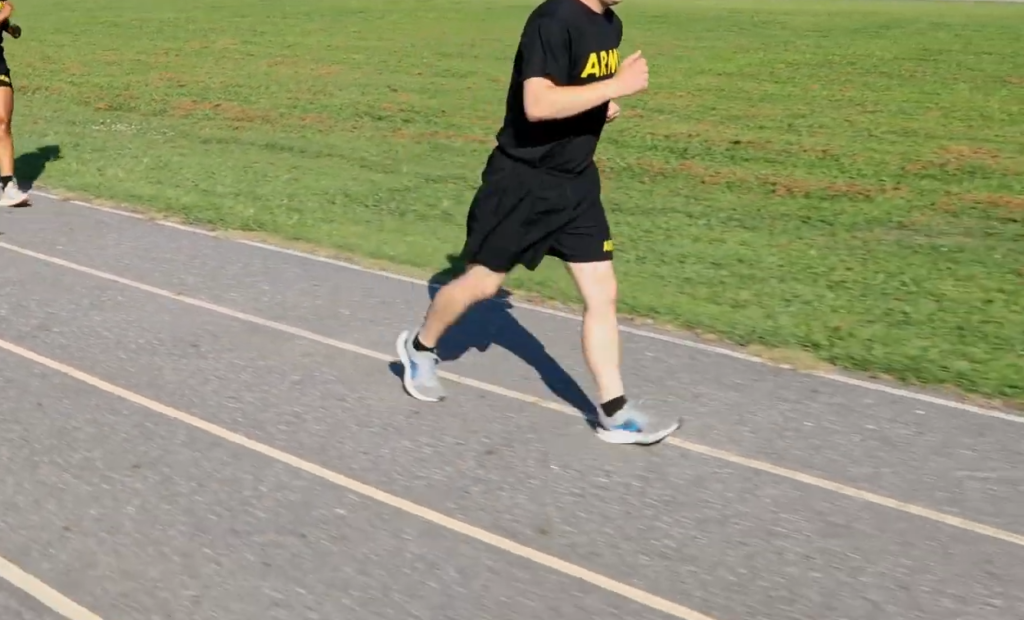
FAQ:
1. What are the ACFT changes for 2024?
As of February of 2024, there are no official changes have been announced for the ACFT in 2024.
2. What are the 3 required ACFT events?
The three required ACFT events include the 3-repetition maximum deadlift, the standing power throw, and the hand-release push-up.
3. What is the bike standard for ACFT?
The minimum standard for the bike event is completing 15,000 meters within 25 minutes for men and 27 minutes for women.
4. What is a good ACFT score?
A good ACFT score would be 500 or above, which means scoring about 80 points in each of the six events.
5. What are the ACFT 2-mile alternate events?
The 2-mile run can be replaced with rowing, biking, or swimming in the ACFT for soldiers who cannot perform high-impact activities.
6. Can you fail an ACFT event?
Yes, failing to meet the minimum standards for any event will fail the entire ACFT.
7. How long is an ACFT valid for?
An ACFT is typically valid for one year from the date it was taken.
8. How can you prepare for ACFT at home?
You can prepare for the ACFT at home by doing exercises that mimic the events in the test. This includes strength training, cardio workouts, and practicing specific movements like the deadlift, push-ups, and planks.
9. Is the ACFT based on age?
No, the ACFT standards are not age or gender-based. They apply equally to all soldiers.
10. Can you change shoes during ACFT?
Yes, soldiers are allowed to change shoes between events during the ACFT.
11. Can you do height and weight on the same day as ACFT?
Yes, the height and weight measurements can be done on the same day as the ACFT.
12. What is the minimum plank time for ACFT?
The minimum standard for the plank event is 2 minutes and 9 seconds.
13. How many points do you need to pass the ACFT?
A total of 360 points, with a minimum of 60 points in each event, are required to pass the ACFT.
Useful Video: ACFT Alternate Cardio Event – 2.5 Mile Walk
References:
- https://rdl.train.army.mil/catalog-ws/view/100.ATSC/77A498C4-A56E-4985-9BE6-31D45631D187-1540838684882/gta07_08_005.pdf
- https://apftscore.com/acft.php
- https://www.dummies.com/article/academics-the-arts/study-skills-test-prep/armed-services/alternate-events-for-the-modified-acft-283754/
- https://newpttestarmy.com/acft-info/acft-alternate-events/
- https://www.reddit.com/r/army/comments/1777yty/acft_alternate_cardio_walk/
- https://www.armyprt.com/apft/alternate-aerobic-events.shtml
- https://armycftcalculator.com/acft-alternate-aerobic-events/
- https://acftcalculator.us/acft-alternate-events/





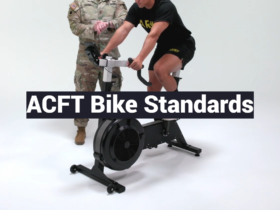
Leave a Reply